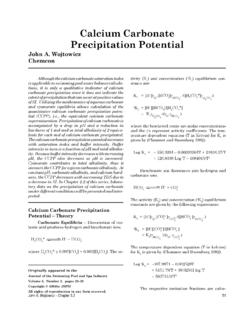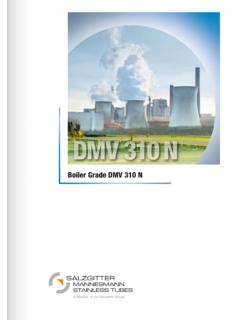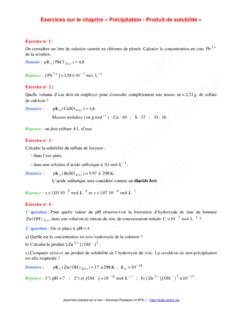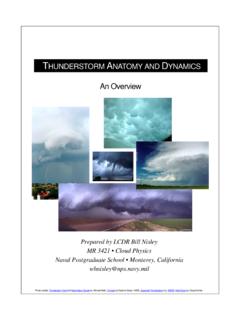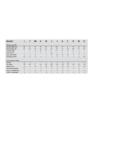Transcription of GUAR GUM Chemical and Technical Assessment
1 Guar Gum (CTA) 2008 - Page 1(4) GUAR GUM Chemical and Technical Assessment Prepared by Yoko Kawamura, , for the 69th JECFA 1. Summary Guar gum is mainly consisting of the high molecular weight (approximately 50,000-8,000,000) polysaccharides composed of galactomannans and is obtained from the endosperm of the seed of the guar plant, Cyamopsis tetragonaloba (L) Taub. (syn. Cyamopsis psoraloides). It is used as thickener, stabilizer and emulsifier, and approved in most areas of the world ( EU, USA, Japan, and Australia). Guar gum were evaluated and ADI not specified was allocated at 19th JECFA (1975) and their specifications were prepared at 17th JECFA (1973) and published in FNP 4 (1978) and republished in FNP 52 Compendium of food additive specification.
2 They were reviewed at 44th and 53rd JECFA, and their revised specifications were published in FNP 52 Add 3 and 7, and republished in FAO JECFA Monographs Combined compendium of food additive specifications . At 67th JECFA the Committee reviewed the specifications of Guar gum and noted that they were covered two grades of product. The Committee decided to prepare two specifications monographs, Guar gum and Guar gum (clarified) . Both monographs were designated tentative and published in FAO JECFA Monographs 3 (2006). Further information, data on gum content, solubility in water and a test method for methanol and isopropanol as residual solvents using capillary gas chromatography were requested before the end of 2007. 2. Description Guar gum, also known as Gum cyamopsis or guar flour, is derived from the ground endosperm of the seed of the guar plant, Cyamopsis tetragonaloba (L) Taub.
3 (syn. Cyamopsis psoraloides). This plant has been cultivated in India and Pakistan for centuries. It can also be cultivated in the southern hemisphere in semi-arid zones in Brazil, Australia and South Africa or in the Southern part of the USA, like Texas or Arizona. The guar kernel is composed of several layers, namely the husk (16-18%) on the outside, the germ (43-46%) and the endosperm (34-40%), which is composed of guar gum. Guar splits are obtained after separation of the husk and the germ. After heat treatment, the hull is easy to separate by either attrition milling or various types of impact mills. The endosperm is recovered by sieving from the finer germ and hull fractions, and then milled to obtain powdered guar gum. The guar gum may be further purified clarified by dissolution in water, precipitation and recovery with ethanol or isopropanol.
4 It is called as clarified (purified, extracted) guar gum. Clarified guar gum in the market is normally standardized with sugars. Guar gum is mainly consisting of the high molecular weight polysaccharides composed of galactomannans which are consisting of a linear chain of (1 4)-linked -D-mannopyranosyl units with (1 6)-linked -D-galactopyranosyl residues as side chains. The mannose: galactose ratio is approximately 2:1. The molecular weight range is 50,000-8,000,000. The clarified guar gum has higher galactomannans content and no longer contains the cell structure. The gum is a white to yellowish white, nearly odourless, free-flowing powder with a bland taste. Guar gum is insoluble in organic solvents. The gum is soluble in cold water without heating to form a highly viscous so1ution.
5 Guar gum solutions have buffering capacity and are very stable in the pH Guar Gum (CTA) 2008 - Page 2(4) range. Addition of a small amount of sodium borate to a water solution of guar gum will result in formation of a gel. 3. Manufacturing Manufacturing principle The endosperms are recovered after separation of the husk and the germ and milled. The clarified gum is obtained by dissolution in hot water and then recovery by precipitation in ethanol or isopropanol solutions. Guar Gum Flow Chart Detailed Manufacturing Manufacturing process of guar gum is as the flow chart. Guar splits are obtained after separation of the husk and the germ. After heat treatment, the hull is easy to separate by either attrition milling or various types of impact mills.
6 The endosperm is recovered by sieving from the finer germ and hull fractions, and then milled to obtain powdered guar gum. Clarified (Extracted, Purified) Guar Gum Guar seedsSplittingGerms Thermal dehuskingMillingPackagingHusks Guar gumDissolutionInsoluble Alcoholic Precipitation FiltrationClarified guar gumPackagingFiltrationDryingMillingGuar splitsGuar Gum (CTA) 2008 - Page 3(4) The guar gum may be further clarified (purified) by dissolution in water, precipitation and recovery with ethanol or isopropanol. 4. Chemical characterization Composition Guar gum is comprised of a high molecular weight polysaccharides composed of galactomannans consisting of a (1 4)-linked -D-mannopyranose backbone with branch points from their 6-positopns linked to -D-galactose ( 1 6-linked -D-galactopyranose).
7 There are between mannose residues for every galactose residue. 4. 2. Possible impurities The commercial samples of guar gum contain approximately 4-12% moisture, 2-5% acid-soluble ash, ash, and 2-6% protein. The samples of clarified guar gum contain approximately 5-10% moisture, acid-soluble matter, ash, and protein. Apart from the gum content, the guar gum contains: - husk residues represented by the acid-insoluble-matter criterion (not more than ) - proteins from the germ represented by the protein criteria (not more than ) - ethanol/isopropanol residues for washing or extraction solvent(not more than 1% singly or in combination) - microbiological contamination 5. Functional uses Technological function Thickener, stabilizer, emulsifier The gum is compatible with other plant hydrocolloids ( , tragatha, kyraya, arabic, agar, alginate, carrageenan, carob bean gum, pectin, methylcellulose, and carboxymethylcellulose) and most chemica11y-modified starches, raw starches, modified cellulose, synthetic polymers, and water-soluble proteins.
8 The presence of some mu1tivalent sa1ts, water-miscib1e solvents and low mo1ecu1ar weight sugars a1ter the hydration and viscosity of guar sols, and produce gels. Food categories and use level In the United States, guar gum is listed for use as an emulsifier, formulation aid and firming agent in the OHHOHHOHOHHHOOHOHOHHHHOHOHOOHOHHHHOHOHHO OHOHHHHHHOOOHHOHHHOHHHOOHOOHOHHHHOHOHOHn Guar Gum (CTA) 2008 - Page 4(4) following foods: Food Category Maximum Use Level (%) Baked goods & baking mixes Breakfast cereals Cheeses Daily products analogs Fats and oils Jams and jellies Milk products
9 Processed vegetable and vegetable juices Soup and soup mixes Sweet sauces, toppings and syrups All other foods The 1977 survey of the United States food industry, however, on1y reported the use of guar gum as a stabi1izer and thickening agent in two food categories8: Food Category Mean Use Level (%) Baked goods Bread products (crumbs, cubes, stuffing batter dips, breading) Cheese Processed cheese Information from the sponsor indicates a normal use level of guar gum in ice cream of 6.
10 Reactions and Fate in Food None noted. 7. References Evaluation of the health Aspects of guar gum as a food ingredient (SCOGS-13), 1973. Life Sciences Research Office, Federation of American Societies for Experimental Biology, Bethesda, MD, Contract FDA-72-85. United States of America, Code of Federal Regulations, 2002. Title 21, Part Food Chemicals Codex, 2004. 5th Ed., p. 210. Kirk-Othmer Encyclopedia of Chemical technology 3rd Ed, 1980. John Wiley & Sons, , USA, , p. 59. Belitz, , and Groseh, W., 1987. Food Chemistry, Springer-Verlag, Berlin, pp. 242-243. 1977 Survey of Industry on the Use of Food Additives (1979) Committee on GRAS List Survey - Phase III, Food & Nutrition Board, National Research Council, National Academy of Sciences, Washington DC, pp.










